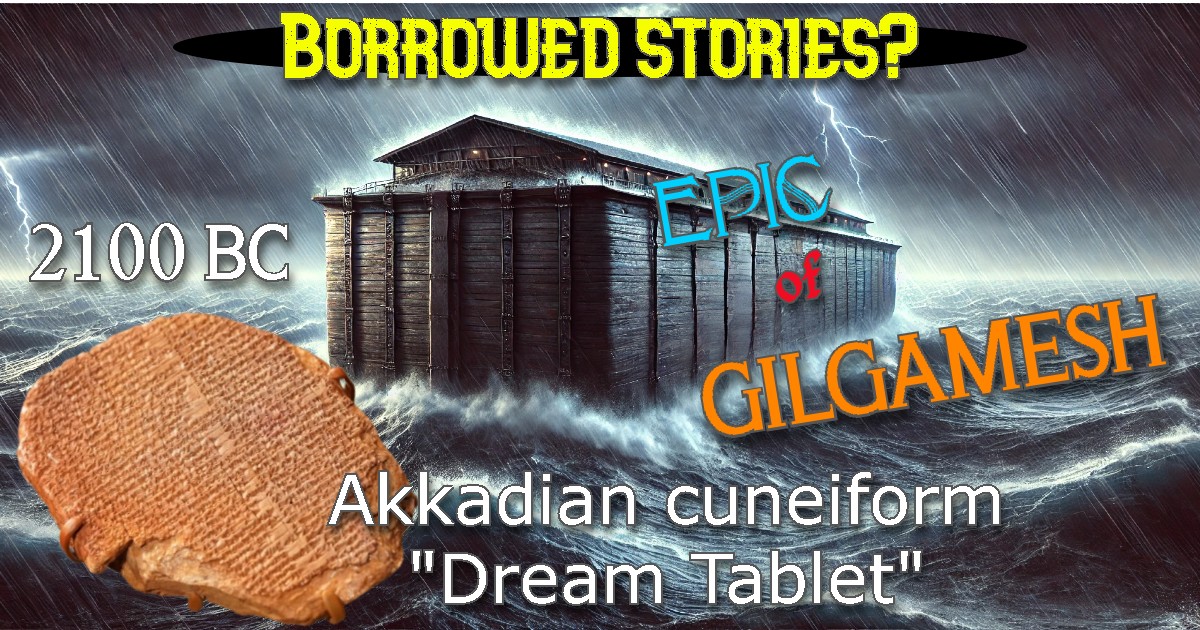The story of Noah’s Ark is one of the most well-known tales in the Bible, often taught to children as a tale of faith, obedience, and divine judgment. But what if Noah’s story isn’t as unique as many believe? What if there are flood myths that predate the biblical account by centuries, even millennia? The evidence from ancient texts might shake the very foundation of what you’ve been taught.
The Epic of Gilgamesh: A Flood Story 1,000 Years Older Than Noah
Long before the Book of Genesis was written, the Epic of Gilgamesh, a Mesopotamian poem dating back to around 2100 BCE, told the story of a great flood. In this epic, the hero Utnapishtim is warned by the god Ea to build a giant boat to survive a world-destroying deluge:
“Tear down your house and build a boat! Abandon possessions and look for life. Spurn property and keep the soul alive!” (Epic of Gilgamesh, Tablet XI)
Sound familiar? Utnapishtim loads his family, animals, and craftsmen onto the ark. After the floodwaters recede, he releases birds to find dry land—just like Noah does with the dove and raven in Genesis 8.
The similarities are too striking to ignore:
- A divine warning
- A massive flood to wipe out humanity
- A specially chosen man building an ark
- The preservation of animals
- Sending out birds to check for dry land
Scholars widely agree that the Noah story is a reworking of earlier Mesopotamian flood myths, adapted for a Hebrew audience during the Babylonian exile.
The Atrahasis Epic: The Flood Before the Flood
Even older than the Epic of Gilgamesh is the Atrahasis Epic, dating to around 1700 BCE. Here, the gods grow frustrated with humanity’s noise and decide to send a flood to wipe them out. The god Enki warns a man named Atrahasis to build a large boat to save himself, his family, and animals.
In this version:
- The gods are divided about the flood—some regret the decision afterward.
- Atrahasis survives, offers sacrifices, and the gods accept his offering with relief, much like God’s reaction to Noah’s post-flood sacrifice.
The parallels to Noah are undeniable, but the theology is different. In the Atrahasis story, the flood is caused by the gods’ annoyance, not humanity’s wickedness. This shift in divine motivation is fascinating when comparing ancient beliefs.
Greek Mythology: Deucalion and Pyrrha
In Greek mythology, Deucalion and his wife Pyrrha survive a great flood sent by Zeus to punish humanity for its wickedness. They build a chest (similar to an ark) and float for nine days before landing on Mount Parnassus. Afterward, they repopulate the earth by throwing stones over their shoulders, which transform into people.
While the details differ, the core elements—divine punishment, survival in a boat, and repopulation—are remarkably consistent with the Noah story.
The Black Sea Flood Hypothesis: A Real Catastrophic Event?
One compelling theory that may link these flood myths is the Black Sea Flood Hypothesis. Around 5600 BCE, it is believed that a catastrophic flood event occurred when rising sea levels from melting glaciers caused the Mediterranean Sea to breach the natural dam at the Bosporus Strait, flooding the once-freshwater Black Sea basin.
Geologists William Ryan and Walter Pitman proposed that this sudden inundation dramatically expanded the Black Sea’s size, drowning vast tracts of farmland and displacing entire populations. This event could have left a profound mark on the collective memory of ancient civilizations in the region, giving rise to flood legends that evolved over time.
Evidence supporting this theory includes:
- Submerged ancient shorelines and remnants of human settlements found deep under the Black Sea.
- Sediment layers indicating a sudden and massive influx of saltwater.
- Oral traditions passed down through generations, morphing into the flood myths we know today.
If true, the Black Sea flood could have been the real-world event that inspired not just the biblical flood story but also the Mesopotamian and Greek versions, as displaced peoples carried their memories across regions.
Why So Many Flood Myths?
The prevalence of flood myths across cultures raises intriguing questions:
- Shared cultural memory? Some argue that these stories reflect a real, ancient catastrophic flood that impacted multiple civilizations.
- Psychological archetype? Others suggest the flood symbolizes humanity’s fear of nature’s uncontrollable power and divine judgment.
- Cultural borrowing? As civilizations interacted through trade and conquest, stories were adapted, merged, and retold to fit new cultural and religious contexts.
Conclusion: Noah’s Story in Context
The Genesis flood narrative, believed by many scholars to have been compiled in its final form around the 6th century BCE during the Babylonian exile, appears to draw heavily on older regional flood myths. The striking similarities between Noah’s story and those from Mesopotamian, Greek, and even geological records suggest a shared literary, cultural, and possibly historical heritage rather than an isolated, unique account.
Rather than seeing Noah’s Ark as an entirely original tale, it can be understood as part of a larger, ancient dialogue about humanity’s relationship with the divine, nature, and morality. The biblical story may have adapted and reinterpreted these older myths to convey specific theological messages to its audience.
Sources:
- The Epic of Gilgamesh (Tablet XI, c. 2100 BCE)
- The Atrahasis Epic (c. 1700 BCE)
- Ovid’s Metamorphoses (Deucalion and Pyrrha)
- Irving Finkel, “The Ark Before Noah: Decoding the Story of the Flood”
- Karen Armstrong, “A History of God”
- William Ryan & Walter Pitman, “Noah’s Flood: The New Scientific Discoveries About the Event That Changed History”

